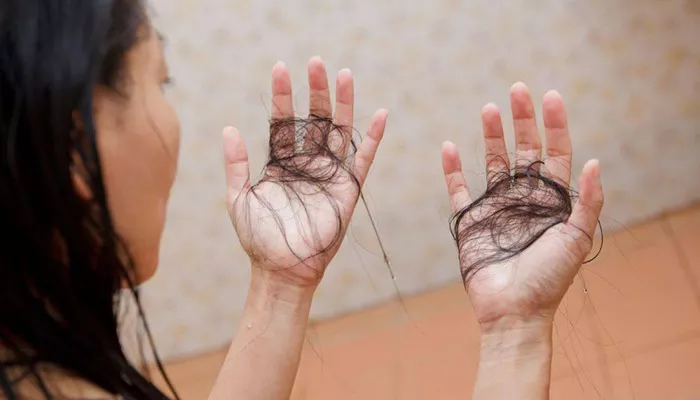Hair loss is a common concern that affects millions of people worldwide. For many, the distressing moment comes when they notice strands of hair clinging to their comb or brush after a simple grooming session. While some hair shedding is normal, excessive hair fall during combing can be alarming. Understanding the underlying causes, distinguishing between normal shedding and problematic hair loss, and knowing the right treatments can help you address this issue effectively.
The Natural Hair Growth Cycle
Before diving into the reasons behind hair fall during combing, it’s essential to understand the natural hair growth cycle. Hair goes through three main phases:
- Anagen (Growth Phase): This is the active phase where hair grows continuously, lasting between two to seven years.
- Catagen (Transition Phase): A short phase lasting about two weeks, where hair growth slows, and the follicle shrinks.
- Telogen (Resting Phase): Lasting around three months, this phase ends with the hair strand shedding naturally to make way for new growth.
On average, a person loses between 50 to 100 hairs per day as part of this cycle. However, when hair shedding exceeds this range or becomes noticeable during combing, it may indicate an underlying issue.
Common Causes of Excessive Hair Fall While Combing
Several factors can contribute to increased hair shedding when combing. These include:
Physical Stress and Breakage
Aggressive combing, especially when hair is wet, can cause mechanical damage. Wet hair is more elastic and prone to breakage, leading to strands snapping off mid-shaft rather than shedding from the root. Using a wide-tooth comb or a detangling brush can minimize this type of damage.
Nutritional Deficiencies
A lack of essential nutrients can weaken hair, making it more susceptible to falling out. Key vitamins and minerals that support hair health include:
- Iron: Deficiency is linked to hair loss, particularly in women.
- Vitamin D: Low levels are associated with alopecia and thinning.
- Biotin (Vitamin B7): A deficiency can lead to brittle hair and increased shedding.
- Zinc: Necessary for hair tissue growth and repair.
A balanced diet or supplements (under medical supervision) can help restore hair strength.
Hormonal Imbalances
Hormonal fluctuations play a significant role in hair health. Conditions such as:
- Postpartum Hair Loss: Many women experience shedding after childbirth due to dropping estrogen levels.
- Thyroid Disorders: Both hypothyroidism and hyperthyroidism can trigger hair loss.
- Polycystic Ovary Syndrome (PCOS): Elevated androgens can lead to thinning hair.
Addressing the hormonal imbalance often helps reduce excessive shedding.
Scalp Conditions
An unhealthy scalp environment can contribute to hair fall. Common issues include:
- Dandruff and Seborrheic Dermatitis: Flakes and inflammation weaken hair roots.
- Fungal Infections (Tinea Capitis): Can cause patchy hair loss.
- Psoriasis: Leads to scaling and increased shedding.
Treating these conditions with medicated shampoos or topical treatments can improve hair retention.
Stress and Emotional Factors
Chronic stress triggers telogen effluvium, a condition where hair prematurely enters the resting phase, leading to increased shedding weeks or months later. Managing stress through relaxation techniques, exercise, or therapy can help mitigate this type of hair loss.
Chemical and Heat Damage
Frequent use of harsh hair treatments—such as bleaching, perming, or excessive heat styling—can weaken hair, making it more prone to breakage during combing. Opting for gentler styling methods and deep conditioning treatments can help restore hair integrity.
Genetic Hair Loss (Androgenetic Alopecia)
For many individuals, hair thinning is hereditary. Male and female pattern baldness leads to progressive hair loss, often exacerbated by combing. Treatments like minoxidil, finasteride, or low-level laser therapy may help slow progression.
How to Reduce Hair Fall While Combing
Choose the Right Hair Tools
- Use a wide-tooth comb or a boar bristle brush to minimize breakage.
- Avoid brushing wet hair; instead, gently detangle with fingers or a wet hair comb.
Improve Hair Care Habits
- Wash hair with a mild, sulfate-free shampoo to avoid stripping natural oils.
- Apply a leave-in conditioner or hair serum to reduce friction.
- Limit heat styling and use a heat protectant when necessary.
Boost Nutrition for Hair Health
- Eat a diet rich in protein, iron, omega-3s, and vitamins.
- Consider supplements like biotin, collagen, or multivitamins if deficient.
Seek Medical Advice When Needed
If hair loss persists despite lifestyle changes, consult a dermatologist. They may recommend:
- Blood tests to check for deficiencies or hormonal issues.
- Topical treatments like minoxidil.
- Prescription medications for conditions like alopecia or PCOS.
When to Worry About Hair Loss
While some shedding is normal, you should seek medical attention if you notice:
- Bald patches or receding hairline
- Sudden, excessive shedding (clumps of hair falling out)
- Scalp redness, itching, or pain
- Hair thinning without regrowth
Early intervention can make a significant difference in managing hair loss effectively.
Conclusion
Hair fall during combing can stem from various causes—ranging from simple mechanical damage to underlying health conditions. By understanding these factors and adopting healthier hair care practices, you can minimize breakage and promote stronger, fuller hair. If the problem persists, consulting a healthcare professional ensures you receive the right diagnosis and treatment. Remember, healthy hair starts with a healthy scalp and body, so taking a holistic approach is key to long-term results.
Related Topics:
- Understanding Excessive Hair Fall: Causes and Solutions
- Understanding Hair Fall: Causes and Effective Solutions
- Which Month Does Hair Fall Out the Most?


